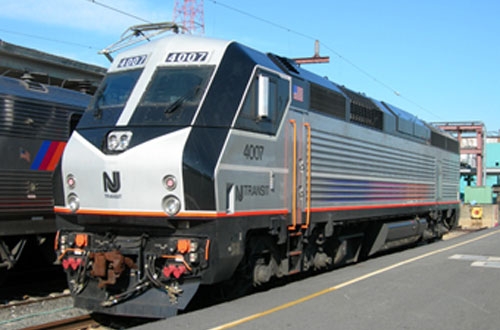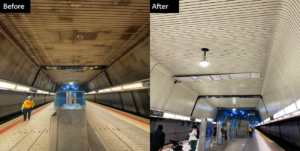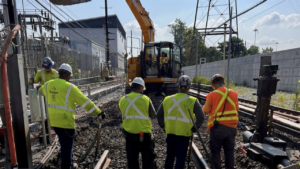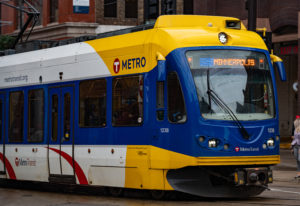NJ Transit adopts operating, capital budgets for FY13
Written by Jenifer Nunez, assistant editor
NJ Transit Board of Directors approved a Fiscal Year 2013 (FY 2013) operating budget and capital program that supports safe, reliable and cost-effective service for the nearly 250 million customer trips provided by the state's rail, bus and light-rail network each year.
“Thanks to a stable mixture of state, federal and other funding sources, as well as NJ Transit’s commitment to operate more efficiently, we are able to put forth an operating budget that will continue to hold the line on fares for the third consecutive fiscal year,” said Transportation Commissioner and NJ Transit Board Chairman James Simpson.
“At only one-half of one percent, the operating budget growth for FY 2013 represents NJ Transit’s second lowest overall growth rate in the last 15 years,” said NJ Transit Executive Director James Weinstein. “By implementing sustainable and fiscally responsible operating and capital programs, we are able to maintain and enhance New Jersey’s robust transportation system while responding to the daily transit needs of our customers.”
The Board approved a $1.904 billion operating budget and a $1.152 billion capital program for the fiscal year that started July 1, 2012.
Nearly half of the revenue in the FY2013 operating budget comes from fares ($894.2 million), with the balance from a combination of commercial revenues ($109.8 million), capital transfers ($363 million) and state operating assistance, as well as other state and federal reimbursements ($536.9 million).
The capital program funds continued state-of-good-repair investments in transit stations and infrastructure, supports an ongoing fleet modernization program and advances service reliability, safety and technology initiatives.
Operating budget
Approximately 57 percent of the operating budget is dedicated to labor and fringe benefit costs, which have decreased by nearly $19.2 million compared to FY 2012. Other significant expenses include contracted services, fuel and power, which together comprise nearly 30 percent of the operating budget.
This year’s operating budget reflects a $13.2 million increase in passenger revenue, the result of projected growth due to the improving economic climate. Overall passenger revenue accounts for nearly 50 percent of the total FY 2013 operating program.
Capital program
The FY 2013 capital program continues to prioritize investment in infrastructure to maintain an overall state of good repair, while also enhancing reliability and safety. It also supports NJ Transit’s ongoing fleet modernization effort, including the continued procurement of more than 1,400 new buses, more than 400 multilevel rail cars and more than 50 electric and dual-power locomotives.
The capital program includes $63 million for investment in systemwide improvements, including $16 million for technology upgrades that improve the customer experience.
Rail infrastructure state-of-good-repair projects will be supported by $79 million in the capital program, including $56 million to fund track and bridge improvements, such as the renewal of the Rockaway River Bridge on the Boonton Line and the rehabilitation of the Leland Avenue Bridge and the Roosevelt Avenue Bridge on the Raritan Valley Line. A total of $13 million will advance electric traction and signal improvements.
Rail car and locomotive improvements will be supported by $88 million in funding, continuing NJ Transit’s efforts to replace aging, single-level railcars with higher-capacity, multi-level railcars.
Rail station improvements will be supported by $16 million from the capital program. The capital program also includes $164 million for bus and light rail state-of-good-repair needs, including $2 million for Newark Light Rail infrastructure improvements.
Roughly half of the capital budget comes from the Transportation Trust Fund, with the balance coming from federal and other sources.





